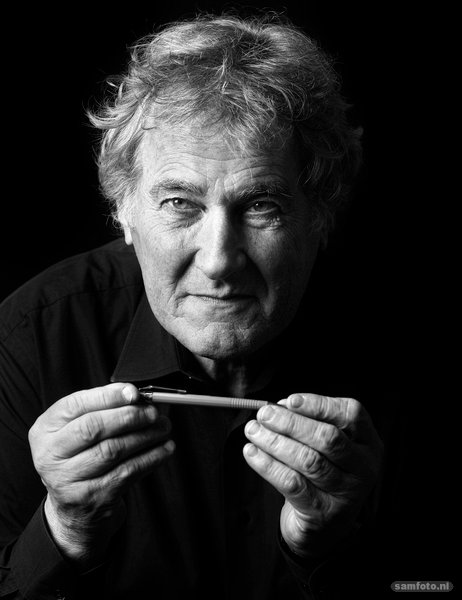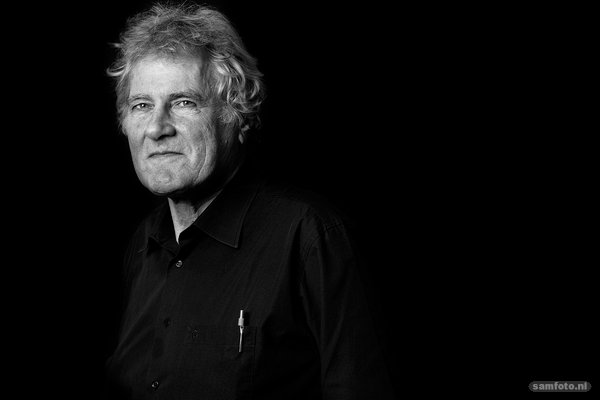‘Why retire if you’re enjoying yourself?’
The president of Huisman maritime equipment, Joop Roodenburg, has been voted TU Delft Alumnus of the Year.
Congratulations on being voted Alumnus of the Year. Did it come as a surprise?
“Yes. I‘m a lot older than the seven alumni who have received the award in the past. But when I saw that I was to be added to the Walk of Fame, alongside a number of famous alumni such as Cornelis Lely (who devised the plan for the Zuiderzee works, ed.), I thought: I'm in good company.”
Lely was a techie who went into politics. If you were to become a minister tomorrow, what would you do first?
“First of all, I think there are too few tech experts in the House of Representatives. As such, most politicians know very little about technology, they think it’s scary and they have no idea what’s going on in industry in this country. If I were a minister, I'd breathe new life into manufacturing. In the Netherlands, we should start producing intelligent structures again, such as the largest cranes in the world that we designed for Heerema. Unfortunately, we had to build those at Huisman China, because it’s become just too expensive here.”
The construction of Huisman’s 66-metre-high production hall in Schiedam was completed in 2012. Roodenburg shows me a photo in the book 'This is Huisman'. This won’t be the only time he reaches for the book to show me what his company has made.
“At the beginning of last year, we reorganised the company and put our production in the Netherlands more or less on hold. We’ve built many large structures in our hall, but now it stands empty. It’s painful to watch the decline of our manufacturing industry. Politicians aren’t doing enough to keep it going.”
Huisman mainly designs and builds equipment for the oil and gas industry, such as pipelines and drill systems, for generating offshore energy. How does that fit in with the theme of this year’s Dies Natalis, Climate Action?
“My company develops and builds equipment for extracting both fossil and non-fossil energy. In 2015, in collaboration with Tocardo, we built the world’s largest commercial tidal power station, to produce energy in a sustainable way. This power station was installed in one of the gaps between the pillars on the Oosterschelde dam to generate electricity. The plan was to do this along the entire dam and then to export the system to other countries.”
Was your plan to generate energy sustainably a success?
“Not really. I wanted the feed-in tariff (a statutory rate for purchasing green electricity at generation costs, ed.) for selling the generated power to the grid. The wind industry received 16 to18 cents per kilowatt hour, and I thought the tidal industry was entitled to the same amount. I still remember that I was supposed to have a meeting with Henk Kamp, the then Minister of Economic Affairs, to talk about it. I was well prepared, but when I opened the door to the meeting room, I saw my whole family standing in front of me. Kamp said: 'We're going to do something a bit different today. You’re going to get a medal!’ People were filming my reaction; you can see the surprise on my face. In the end we only got 4.9 cents per kilowatt hour, the same as for grey energy. This feed-in tariff would make the tidal power station completely unprofitable, so I sold our shares for a symbolic amount.”
Huisman is now working on another form of sustainable energy: geothermal energy. Is that more promising?
“Politicians are keen to say that things are going well, but if you look at the figures it’s plain to see that this isn’t making much progress either. It’s taking a long time for us to get the permits we need to drill the two holes. (With geothermal energy, hot water is pumped up from the ground to heat houses, greenhouses and industry. The cooled water then flows back down through the other hole, ed.). We’ve previously drilled wells in Bergschenhoek and The Hague, but at the moment the drilling installation is still in our factory because we’ve had to wait a long time for a permit to drill at Pijnacker. But once those wells have been drilled, you'll have geothermal energy for 20 to 30 years. The government needs to come up with a delta plan to issue those permits faster and to approve more projects.”
So, you do believe in a future with sustainable energy?
“That could be part of the future. I share Shell 's vision, which predicts that our oil usage will peak in 2025 and gas usage will peak in 2030.
That will be replaced by a combination of geothermal, solar, wind, nuclear and thorium-based (a safer alternative to uranium as a fuel for nuclear power stations, ed.) forms of energy. In the meantime, we will still need gas and oil. The development of renewable energy is also very slow. We are only generating 1/7th of the solar, geothermal and wind energy needed to cover the decrease in gas reserves from small fields. So we are actually doing far too little in terms of sustainable energy. Everyone says we should stop using gas. I think that’s doable, but then we'll have to take action!”
So what now?
“The greatest energy savings can be achieved by working more efficiently. We are extracting oil and gas from the ground quicker and with fewer people. That’s a quick win.”
In 2013, you bought the old arsenal in Delft and converted it into the Buccaneer, where you support young companies developing technological innovations for the energy transition. Are you putting your hopes for a sustainable future on TU Delft students?
“In a way, yes. The Buccaneer is home to fifteen companies engaged in the energy transition. I want to put them in touch with big companies in my world. We'll also involve TU Delft in this process. For example, I recently invited six deans to brainstorm current issues and to explore areas in which we could work together, such as topics for graduate research projects. Think about the development of non-corroding plastic tubes – to be used in geothermal energy – or a fundamentally different way of installing wind turbines by assembling them onshore and transporting them in their entirety on a special vessel.”
You are 69 years old. Are you ever going to retire?
“Actually, I should have retired a long time ago, but I don’t intend to anymore. Why retire if you're still enjoying yourself?”
What's your biggest dream?
“My dream has always been to develop and produce great machines and systems. For example, in 1986, when the price of oil was only ten dollars, we built an earthquake simulator for an amusement park. We even bought the roller coaster manufacturer Vekoma Rides, which we sold very recently. We also built two sky shuttles for cruise ships. That’s just a lot of fun. My dream is to be innovative in different areas. Whether I build theme park rides or drilling systems, it makes no difference to me.” <<
CV
Joop Roodenburg (1950) is president of Huisman Maritime Equipment in Schiedam. In 1971 he completed his studies in mechanical engineering at the HTS and in 1977 he graduated in measurement and control technology at TU Delft. Huisman is a leading player in the design and construction of pipeline systems and is active in next-generation drilling systems, both on land and offshore. It is also working on renewables. In 2015, Roodenburg launched ‘Buccaneer Delft’, an accelerator for young technology companies in the energy and offshore sector. This way, he aspires to share his passion for innovation and his entrepreneurship with young and ambitious entrepreneurs. Since 2018, the complex has also been home to Kruydt restaurant.


